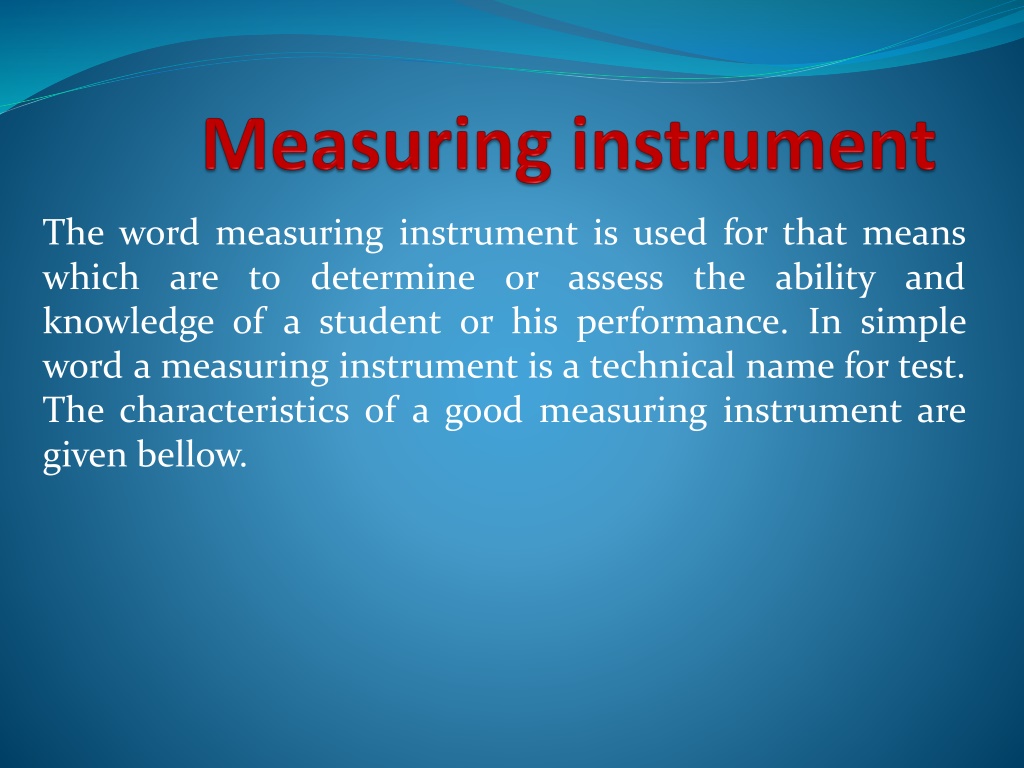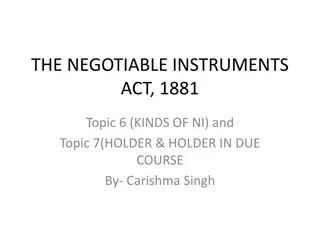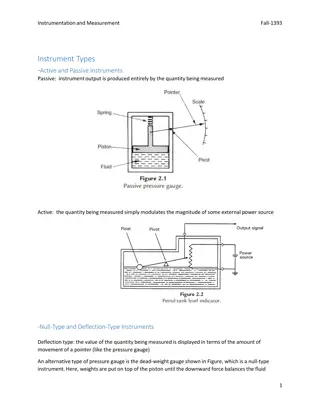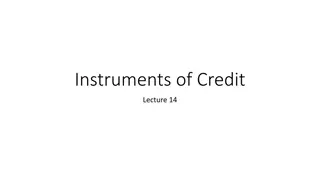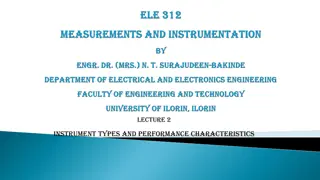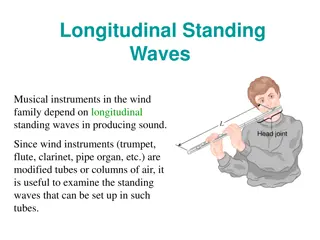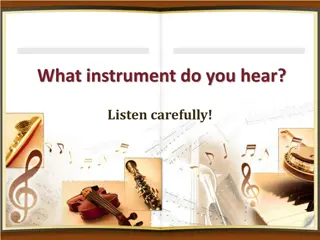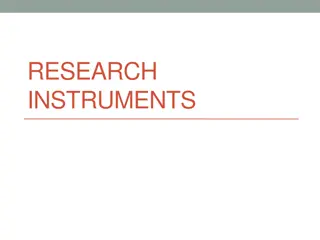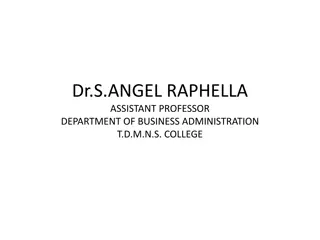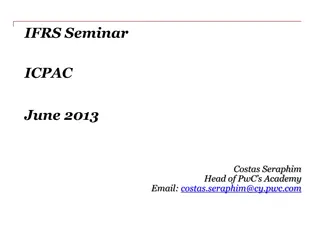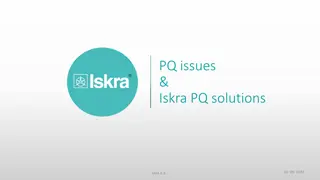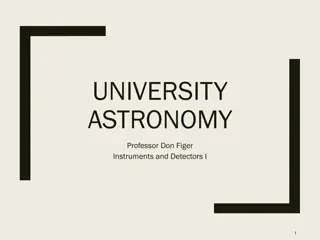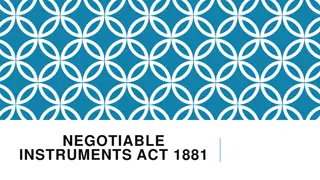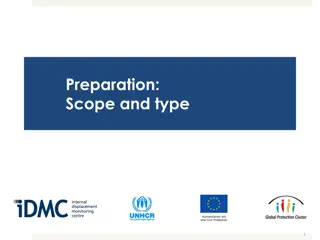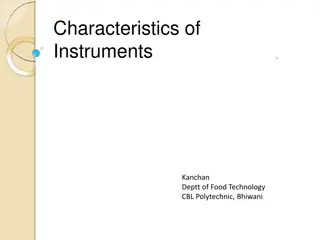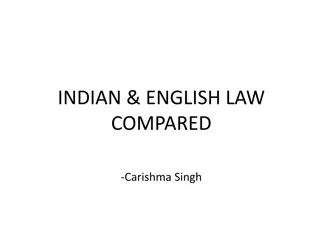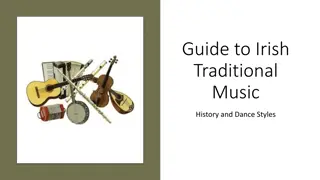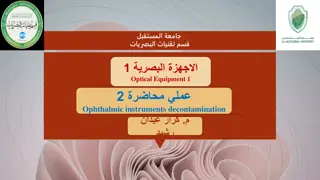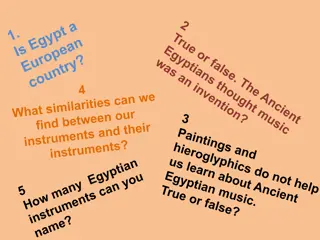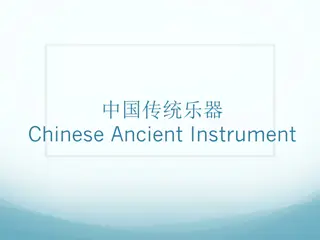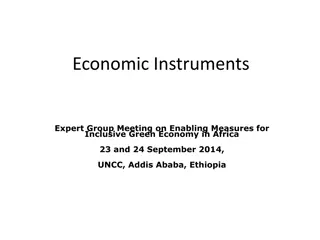Understanding Measuring Instruments for Test Quality
A measuring instrument is crucial for assessing student performance. Validity, reliability, differentiability, and practicality are key characteristics of a good instrument. Validity, the most important quality, ensures accurate measurement. Types of validity include content, criterion-related, concurrent, predictive, and construct validity, each serving specific purposes in testing. Content validity focuses on test representation of course content, while criterion-related validity examines correlation with external criteria. Understanding these aspects is essential for creating effective assessments.
Download Presentation

Please find below an Image/Link to download the presentation.
The content on the website is provided AS IS for your information and personal use only. It may not be sold, licensed, or shared on other websites without obtaining consent from the author. Download presentation by click this link. If you encounter any issues during the download, it is possible that the publisher has removed the file from their server.
E N D
Presentation Transcript
The word measuring instrument is used for that means which are to determine or assess the ability and knowledge of a student or his performance. In simple word a measuring instrument is a technical name for test. The characteristics of a good measuring instrument are given bellow.
Quality of measuring instrument validity Reliability Adequacy/ objectivity Differentiability Practicality
Validity Validity is the most important quality of a test. It refer to the accuracy with which a thing is measured. A test is said to be valid if it measures what it claims to measure. According to S. G jure Validity is the extent to which a test measures what is intended to measure. It is also possible that a test may be valid for some specific objective but may not be valid for other objective/purpose.
Example of un validity If we want to test for our students have mastered and we ask them to answer five questions although the course book contain 20 chapters. This test may not be valid because many of the chapters are not represented in the test.
Types of validity 1 Content validity 2 Criterion related validity concurrent validity predictive validity 3 construct validity
Content validity Also called curriculum validity. We need the achievement test. According to bronner The content validity of a test refer to the extent to which the test content represent the specify universe of a content. E,g if a teacher taught a course of biology and would like to give a test at the end of the course. Now if his test include only items taken from the course he taught and has no item from outside the course. It is said that his test possesses the content validity.
Continue. Similarly a spelling test would be valid if it comprises a repetitive sample of only those words which constituted the universe of content.
Criterion related validity It refer to the extent to which the test result correlates with some criterion. E,g a physics test may correlated with another physics test or teacher rating. There are two types Concurrent validity Predictive validity
Concurrent validity It refer to the extent to which the test result correlates with some criterion at the same time. Concurrent means present ability.
Predictive validity It refer to the extent to which the test result correlates with some criterion obtain after stated interval. The quality of a test through which we can make predication about the future performance of students.
Construct validity Refer to the extent to which the measure the construct at claim to measure. It is a psychological trait used to explain some aspect of human behavior. It is non observable. E.g intelligence, creativity, anxiety. We need to study the psychologist theory about the human behavior for measuring the students intelligence/creativity.
